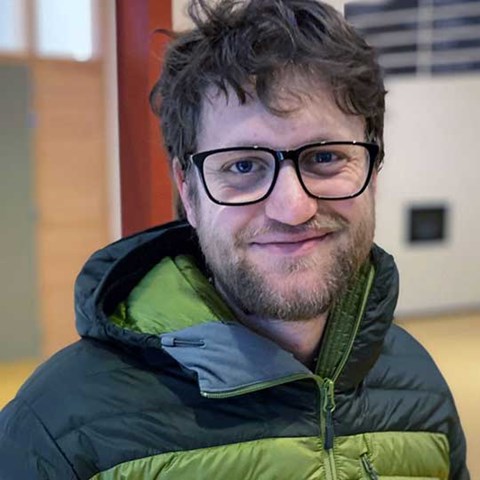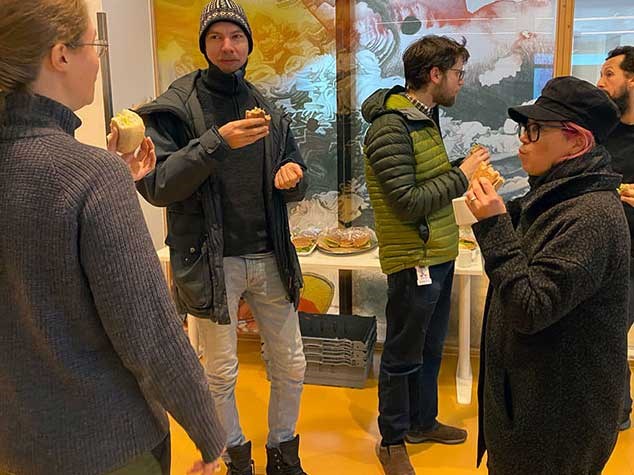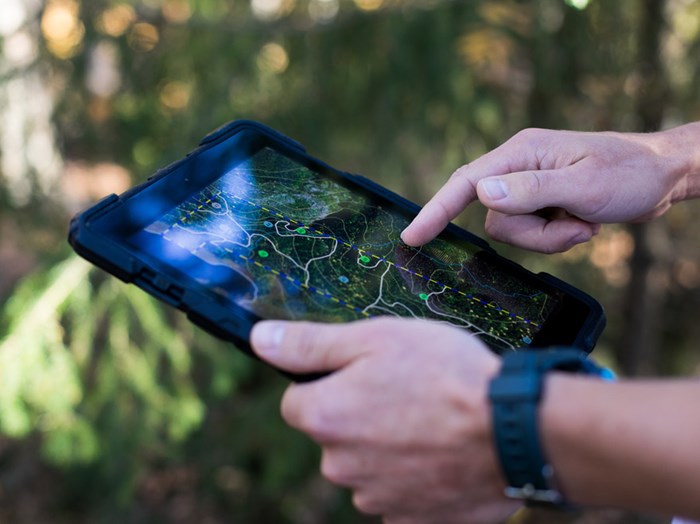The workshop was well attended - participants came from all faculties and represented over 30 departments. The aim was to reach researchers who were curious about environmental monitoring and assessment (EMA) but had not at all, or only partially, used EMA in their research. The workshop provided useful information about SLU’s environmental monitoring and assessment and the twelve different programs and their support organisation, as well as some inspiring examples of how SLU researchers who are experienced users of environmental data work with this in their research.
The background to the workshop began with a survey that SLU Future One Health conducted in collaboration with Environmental Data Support (which is part of Data Management Support) about a year ago. One of the questions was: Are you familiar with SLU’s environmental monitoring and assessment? Of the 92 researchers who answered the survey, 40 % indicated that they were not familiar with SLU’s EMA.
“We wanted to try to change that,” says Susanna Sternberg Lewerin, program director for the SLU Future One Health platform. Of course, it depends on how the questions are asked, so you have to interpret the result with caution, but we still felt that there was (and is) great potential to develop the link between research and environmental monitoring and assessment - and an internal workshop was a good start. Our commitment to research and environmental analysis is also in line with our mission to stimulate interdisciplinary collaborations in various ways and to develop methods and approaches for this within SLU, continues Susanna.
Increase accessibility
An introduction was given to the twelve different environmental analysis programs with their associated databases, how to access them, and who to get support from if you want to start using this data. The group discussions resulted in questions about needs, opportunities, and barriers - and provided several inputs on how to increase accessibility and user-friendliness to start using this data and reduce the obstacles that may stand in the way of getting started.
“I think that SLU Future One Health organised an excellent workshop on how environmental data can be used in research, which is extremely valuable for us at SLU to become even better at utilizing the synergies between research and environmental monitoring and assessment,” says Göran Ståhl, acting Vice-Chancellor with responsibility for SLU's Environmental monitoring and assessment. “There is great potential for development here - it is an underutilized gold mine, and I hope that even more SLU researchers will use these resources.”
SLU Environmental Data Support and a few representatives from SLU’s EMA programmes were co-organisers, contributing to the programme design and giving presentations. Researchers from all campuses participated in the digital workshop, which also provided an opportunity for networking over a fika at all locations.
Words from participants
During the coffee break at Campus Ultuna, a few words were exchanged with Oliver Moore, a Postdoctoral at the Department of Forest Mycology and Plant Pathology:
What made you interested in participating in the workshop?
“I wanted to know what EMA data was available to SLU and where to find it. This was both for my own current postdoc project, which focuses on soil nitrogen cycling at three different sites throughout Sweden and for potential future projects”.
Did you think the workshop delivered what you expected?
“I found the workshop very informative. I learnt about the multiple datasets available and was provided with links to them and the respective contacts for the datasets. The workshop also provided useful advice about how to properly use the datasets”.
Anything in particular you would like to highlight from the workshop?
“The workshop emphasized the importance of involving the contact person for the dataset throughout any project. This is so that one is fully informed about the nature of the dataset (i.e. the metadata and any gaps in the dataset) so one can use it appropriately). We also discussed the challenges of using SLU’s EMA data, especially regarding language barriers and time constraints for international students doing projects”.
Data Management Support at SLU is a university-wide support function that provides guidance to SLU employees and students on issues related to data management. Mikaela Asplund is coordinator and responsible for Environmental Data Support.
“It is gratifying that so many of SLU’s researchers are curious to learn more about EMA at SLU – what data is available, and how it can be used in their own research, and we are now considering how to take these insights further in 2024 and beyond”.
It is a gold mine - but there are of course opportunities for development to create an even better structure and adaptations to increase user-friendliness. It is also clear that even more communication efforts are needed to increase knowledge and improve accessibility so that the gold mine can benefit even more researchers. It also became clear in the group discussion, that it can be difficult to find the right data and understand what data is available in the different databases. Difficulties for those who do not understand Swedish were also mentioned, as well as challenges in combining different forms of data, such as quantitative environmental data and qualitative social science data. Easily accessible contact information was also requested, as well as a more logical and understandable web structure on both the Swedish and English web pages.
Text and photo: Eva-Stina Lindell
To Vårt SLU


